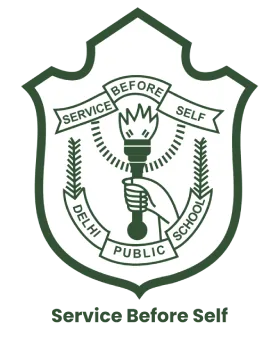Reading proficiency is one of the strongest determinants of a child’s academic achievement in today’s educational context. However, identifying the correct level of reading material for children is a much-debated issue from the view of both teachers and parents today. Alongside this is the emerging great cry for holistic education that helps in learning by the child in and out of school. DPS Warangal School has a fine balance that should be struck between curricular and co-curricular activities, giving students a sound education. This article talks about how children can be ensured to be provided with the correct level of reading books, and at the same time, aims to discuss the relevance of extracurricular activities and how schools in Warangal could blend these elements into their system for the benefit of their students.
Understanding the importance of age-appropriate reading material
Early years (3-6 years):
It is the developmental stage in which children acquire basic skills such as letter recognition, phonics, and learning a small vocabulary. Therefore, books in this stage should have a lot of pictures and very short and simple sentences. Nursery rhymes, repetition, and the inclusion of common concepts (e.g., colors, animals, or daily activities) will help children construct their language skills.
Primary school (ages 6-10):
At age 6, children move to primary school to develop reading skills and be ready to read more complex sentences with probably more complex vocabulary.
Middle school (ages 10-14):
Between 10 and 14 years of age, middle school students read fairly fluently. They begin to discover issues like identity, societal problems, and personal growth through a book. Complex narratives and classic literature often carry stories in a range of genres (from fantasy to realistic fiction) to challenge students to develop an increasingly difficult vocabulary and critical thinking skills.
High school (ages 14+):
High school students will be ready for even more advanced texts than academic, classical literary works and complex novels. Weighty issues can involve theories of philosophy, occurrences of history, and characters in careful studies. This stage of reading is ideal for preparing them for a lifetime of experience, be it higher education or the workforce.
Hence, ensuring the correct aliquots of reading material for children of every age group has been enhanced mentally, critically inculcating skills, and boosting reading into a lifetime habit.
Methods to ensure that children have the correct level of reading books
1. Assessment of reading:
Testing for reading levels is the best way to decide on the appropriate learning level for a child. Such evaluations can be done using formal, well-structured, and systematic tests or informal methods, including analyzing a teacher’s in-class discussions and observations with students. Educators will judge what books make good suggestions according to their assessment of the child’s fluency, comprehension, and vocabulary by giving or not giving a reading level to a particular text.
2. Leveled reading systems:
Most schools have leveled reading systems that catalog difficult and easy books. This system contains guidelines on which books can be read for each age range or reading ability.
3. Peer and teacher recommendations:
Recommendations from peers and teachers can help students a lot. The genres of interest of children help to guide the teachers and parents in making a good selection of books that will motivate the child to read more. Students will stay engaged and become better readers when allowed to find books that relate to their interests.
4. Constant monitoring:
Reading progress should be constantly monitored for the students so that they are not struggling with books beyond their level. Teachers can provide ongoing feedback and tailor readings according to needs. This would also encourage students to step forward at their own pace and save them from frustration.
Blending creative arts and reading:
Schools in Warangal have adopted a multidisciplinary approach based on creative arts and reading. They organize plays, poetry recitals, and literature clubs with their students to provide these varied exposures. This engagement would allow students to read some literature funnily. This motivates the students to read the text more deeply and makes the understanding of the text better.
1. Sports and reading:
Sports are an indelible part of the curriculum in Warangal schools; the most popular sports include football, cricket, and athletics. Physical activities not only bring good health but also form the basis of a strong concentration, which can give partial benefits for academic excellence, including reading. In reading for them, they encourage reading that is related to sports and athletes so that reading links to what the students enjoy and what inspires their passions.
2. STEM and reading:
Schools in Warangal have also included STEM (science, technology, engineering, and mathematics) programs—teaching students to think critically and solve problems. Such students are given exposure to books on those subjects to advance their knowledge and hoist their interest further in academic pursuits.
The provision of this ideal reading material unlocks the doors for children to achieve progress in their academics and develop their cognition. Extracurricular activities make them excel both in and out of the classroom. Warangal schools would thus produce future generations not just with academic brilliance but also increased social awareness and heightened creativity by converging effective reading strategies with a wide range of extracurricular activities.
At DPS Warangal, we believe in fostering a love for reading by ensuring children are provided with books that match their reading levels. By doing so, we help shape a new generation of thinkers, leaders, and compassionate individuals. With the world rapidly advancing in knowledge and literacy, these skills are more critical than ever. When the joy of reading and the challenge of learning are in balance, children do not just read—they develop a lifelong skill to thrive in their surroundings.


